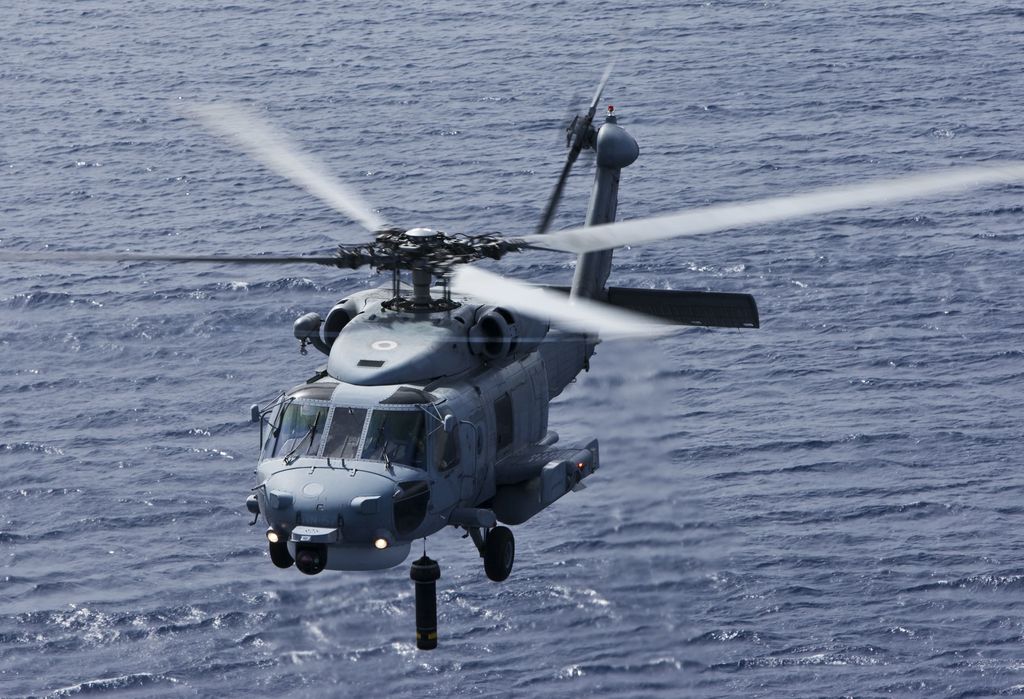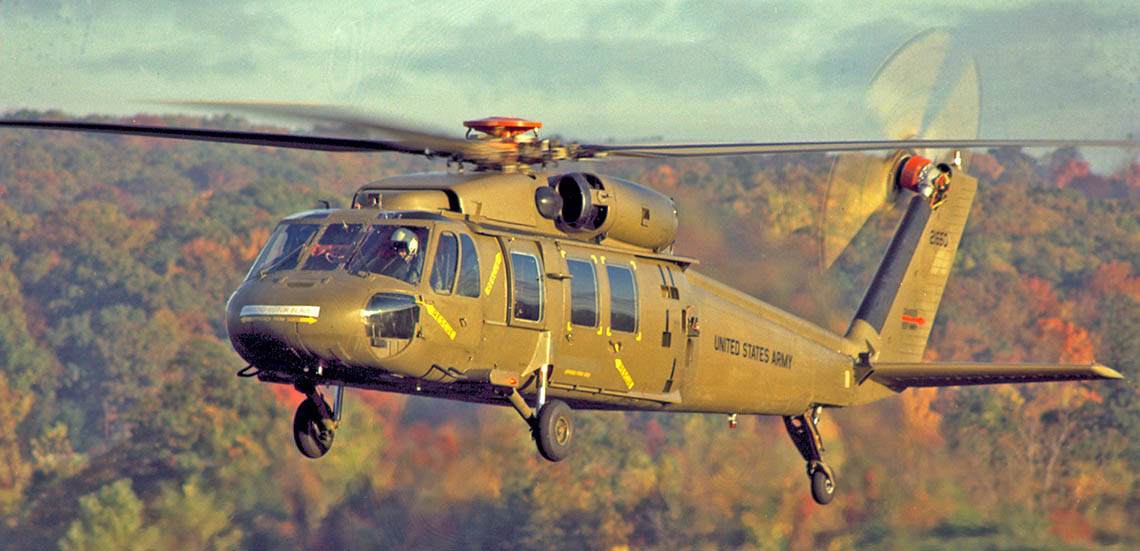Checking out the Capacities of the Sikorsky S 70: A Thorough Evaluation
Checking out the Capacities of the Sikorsky S 70: A Thorough Evaluation
Blog Article
High-Performance Multi-Role Rotorcraft Featuring Advanced Cockpit Technologies and Integrated Sensor Systems
The realm of rotorcraft innovation has seen noteworthy advancements in recent times, particularly in the world of high-performance multi-role rotorcraft equipped with sophisticated cockpit technologies and perfectly integrated sensing unit systems. These innovations have not only increased the functional abilities of rotorcraft yet have actually likewise considerably affected modern-day aviation procedures on different fronts. From enhanced mission convenience to improved operational effectiveness, the convergence of advanced cabin modern technologies and integrated sensing unit systems has actually ushered in a new age of possibilities for rotorcraft applications. In the following conversation, we will check out the advancement of rotorcraft modern technology, dive right into the realm of sophisticated cabin developments, and take a look at the effects of integrated sensor systems on the functional flexibility and efficiency of contemporary rotorcraft.
Evolution of Rotorcraft Technology
The development of rotorcraft technology has been marked by considerable advancements in the rules of aerodynamics, products, and propulsion systems, shaping the abilities and performance of modern-day rotorcraft. Wind resistant enhancements have enhanced the effectiveness and ability to move of rotorcraft, allowing for raised speed, agility, and stability throughout flight (sikorsky s 70). Developments in materials, such as using composite products and progressed alloys, have brought about lighter yet stronger rotorcraft frameworks, enhancing general efficiency and durability. In addition, innovations in propulsion systems, including a lot more powerful engines and innovative propulsion innovations, have actually allowed rotorcraft to accomplish higher altitudes, faster rates, and better payloads.
These improvements have not just transformed the abilities of rotorcraft but have actually likewise broadened their applications across different sectors, consisting of armed forces, commercial, and emergency situation services. The constant evolution of rotorcraft innovation remains to drive advancement in the area, pushing the boundaries of what is feasible and forming the future of vertical flight.
Advanced Cabin Innovations
Building upon the foundational developments in the rules of aerodynamics, materials, and propulsion systems, the world of rotorcraft technology currently moves emphasis in the direction of pioneering Advanced Cockpit Innovations. The integration of advanced modern technologies within the cabin environment plays an essential role in boosting the operational capacities, security, and effectiveness of modern-day rotorcraft. sikorsky s 70. Advanced Cockpit Innovations encompass a large selection of attributes designed to give pilots with enhanced situational awareness, structured data monitoring, and intuitive control user interfaces
One of the vital advancements in cabin layout is the application of glass cabins, which replace conventional analog assesses with high-resolution display screens. These digital systems provide adjustable formats, real-time data assimilation, and boosted readability, making it possible for pilots to access critical info at a glance. Progressed avionics systems, such as fly-by-wire controls and boosted reality screens, are reinventing how pilots connect with the aircraft, allowing for precise control and boosted decision-making capacities.


Integrating innovative cockpit advancements not just improves pilot performance however additionally adds to total goal effectiveness and security in complex functional settings. By leveraging cutting edge modern technologies within the cabin, rotorcraft suppliers are establishing brand-new criteria for functional excellence and goal success.
Integrated Sensing Unit Solutions
With the evolution of rotorcraft modern technology, the combination of innovative Integrated Sensor Solution has actually come to be vital in enhancing operational effectiveness and safety. These Integrated Sensing unit Solutions encompass a broad range of technologies that give crucial information for different features such as navigating, monitoring, targeting, and environmental tracking. By flawlessly incorporating sensing units like radars, cams, lidar, and infrared systems into rotorcraft, drivers can benefit from enhanced situational understanding, boosted objective capacities, and reduced pilot work.
One secret benefit of Integrated Sensing unit Equipments is their capability to gather real-time information and provide actionable insights to pilots and mission operators. Progressed radar systems can detect and track targets over long distances, allowing for very early risk discovery and efficient feedback preparation. Furthermore, integrating electro-optical and read infrared cameras allows rotorcraft to carry out reconnaissance and monitoring missions with accuracy and accuracy.
In essence, the combination of innovative sensor technologies right into rotorcraft not just enhances operational performance however likewise contributes dramatically to overall goal success and staff security. As rotorcraft remain to develop, the function of Integrated Sensing unit Equipment will undoubtedly stay at the forefront of development in the aerospace sector.
Functional Flexibility and Performance
Enhancing functional versatility her response and efficiency in rotorcraft is a natural progression from the integration of sophisticated Integrated Sensor Equipments. By leveraging the insights and data provided by these sophisticated sensor systems, rotorcraft can optimize their performance throughout numerous objectives and settings.
Operational convenience includes the capability of rotorcraft to adjust to different roles and situations efficiently. With innovative cockpit technologies and integrated sensor systems, rotorcraft can perfectly change in between tasks such as search and rescue, medical emptying, surveillance, and extra. This flexibility boosts the rotorcraft's capability to meet diverse operational requirements without requiring extensive reconfiguration.
Effectiveness in rotorcraft operations is vital for optimizing mission effectiveness and source application. Integrated sensor systems play a critical role in improving operational effectiveness by offering real-time data on weather condition problems, terrain mapping, target monitoring, and much more. This data enables pilots to make educated decisions quickly, optimize trip courses, preserve gas, read what he said and enhance overall objective productivity.
Influence On Modern Aeronautics Operations

In addition, the assimilation of innovative sensors assists in improved goal preparation and implementation, enabling rotorcraft to execute a large range of tasks with boosted precision. From search and rescue procedures to aerial firefighting and regulation enforcement missions, the abilities of modern-day rotorcraft equipped with sophisticated cabin technologies and integrated sensor systems are unequaled.
Additionally, the influence of these innovations expands past operational performance to cost-effectiveness and sustainability. By enhancing flight routes, gas consumption, and maintenance timetables, high-performance rotorcraft geared up with advanced cockpit innovations and sensing units add to lowering functional costs and ecological impact, making them essential assets in modern-day aviation procedures.
Final Thought
To conclude, the high-performance multi-role rotorcraft with advanced cockpit modern technologies and incorporated sensor systems stands for a significant evolution in aviation innovation. These developments enhance operational convenience and effectiveness, inevitably impacting contemporary air travel operations in a favorable method. The combination of these sophisticated innovations allows for improved capacities and efficiency in different objective scenarios, showcasing the proceeded development of rotorcraft modern technology in the aviation market.
The realm of rotorcraft technology has actually seen significant innovations in recent times, particularly in the realm of high-performance multi-role rotorcraft geared up with advanced cabin technologies and seamlessly integrated sensing unit systems. From boosted mission adaptability to boosted operational effectiveness, the merging of advanced cockpit modern technologies and incorporated sensor systems has ushered in a brand-new age of opportunities for rotorcraft applications. In the complying with conversation, we will certainly explore the evolution of rotorcraft technology, delve right into the realm of advanced cabin developments, and check out the ramifications of integrated sensor systems on the operational adaptability and efficiency of contemporary rotorcraft.

Report this page